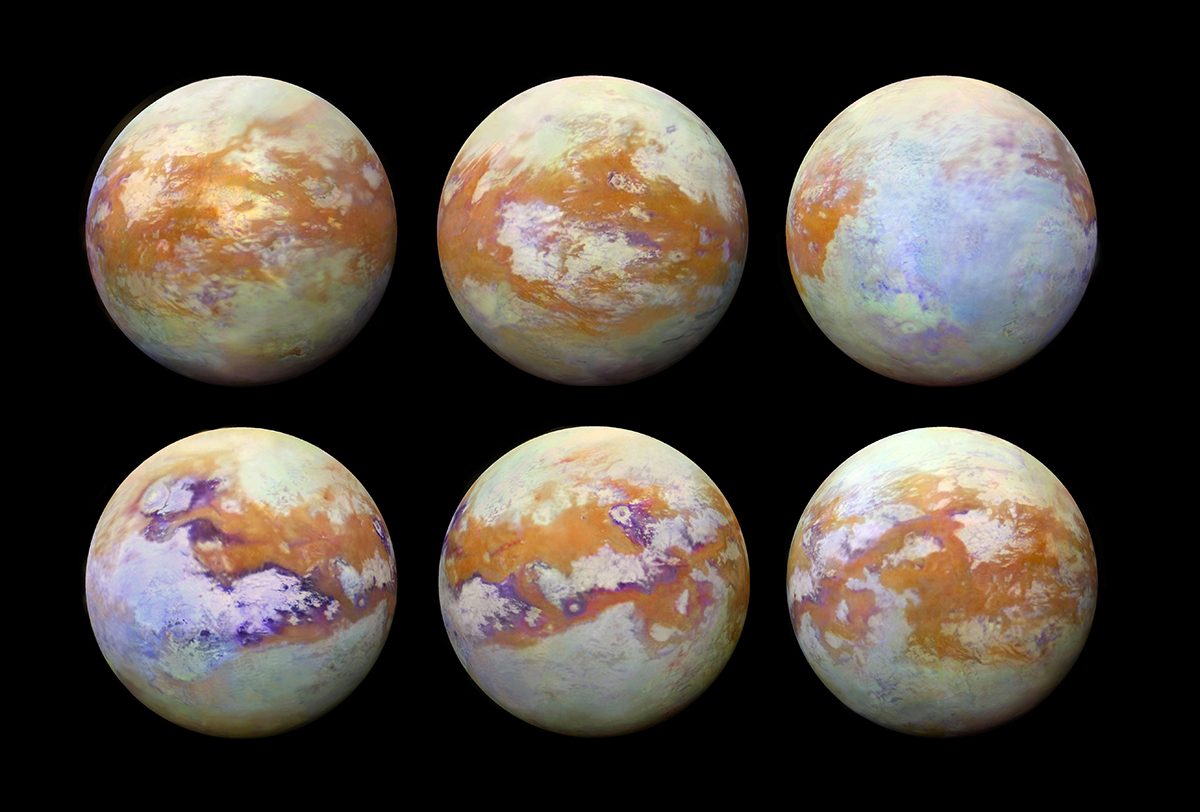Could Titan’s liquid methane lakes be a cradle for life beyond Earth?
Saturn’s largest moon Titan is a key Solar System target in the search for life and habitable conditions beyond our planet.
Titan is the only place beyond Earth in our Solar System known to have liquid on its surface.
In fact it has clouds, rain, rivers, lakes and seas, all working together in a natural cycle.
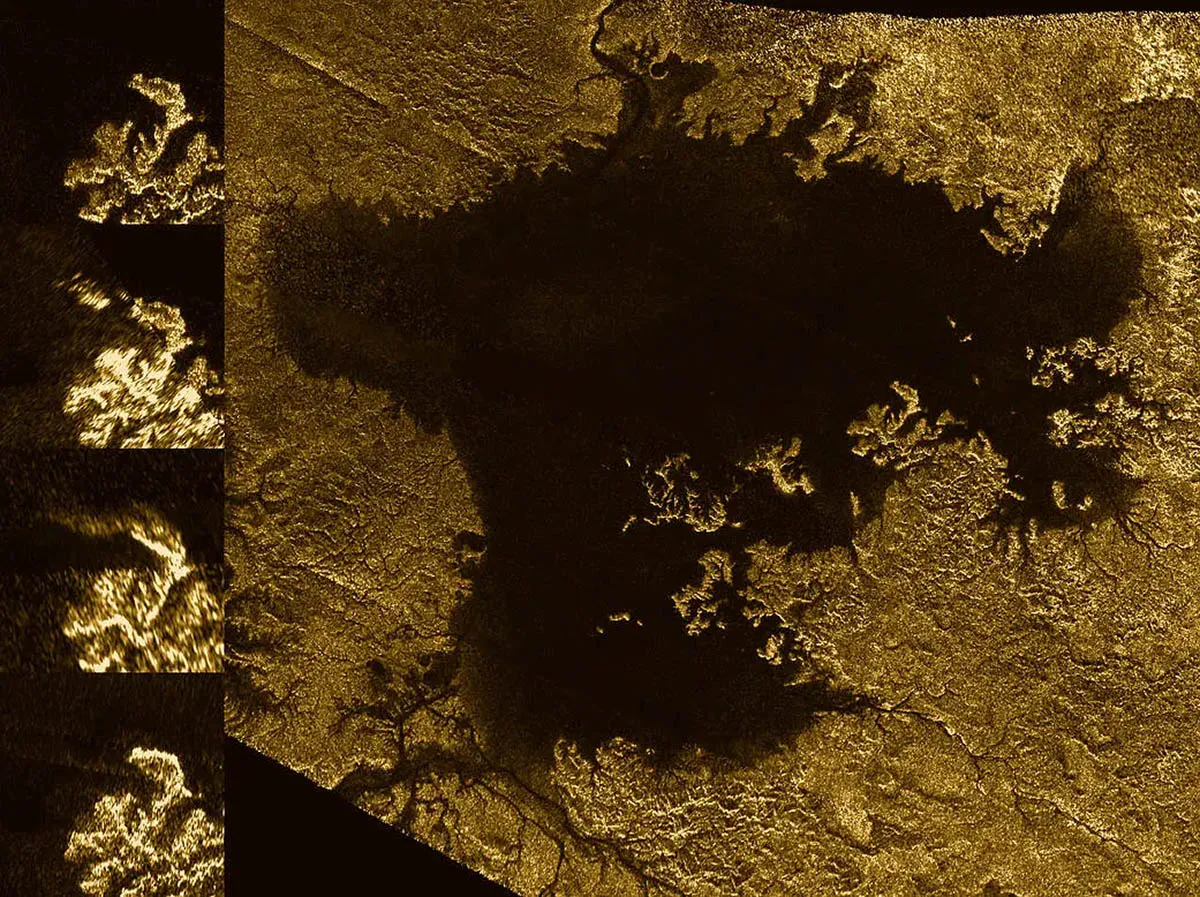
But these bodies on Titan don’t contain liquid water. Instead, its lakes and rivers are filled with liquid hydrocarbons like methane and ethane.
NASA research suggests these hydrocarbon-rich lakes might be doing something extraordinary.
According to a study published in the International Journal of Astrobiology, cell-like structures called vesicles might naturally form in Titan’s frigid lakes.
This is a process that, on Earth, played a vital role in the origins of life.
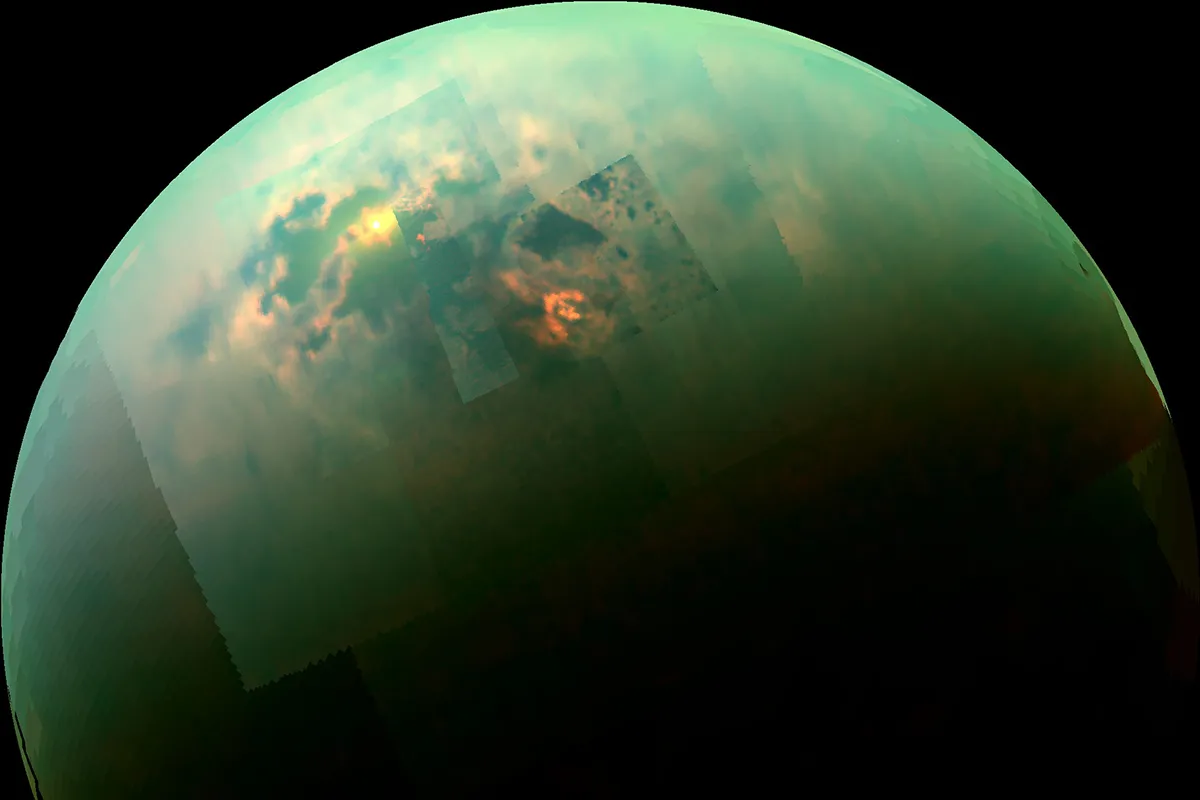
Life on Earth, life on Titan?
On Earth, life likely began in a soup of organic molecules packaged into vesicles, which are tiny compartments made by molecules called amphiphiles.
These molecules are split: one end loves water (hydrophilic) and the other doesn’t (hydrophobic).
In the right conditions, they arrange into protective compartments like soap bubbles, similar to the membranes that make up the outer walls of our cells.
But Titan is no Earth. Its lakes aren’t made of water and its average surface temperature hovers around a chilly –290°F (–179°C).
So could vesicles still form in such an alien world?
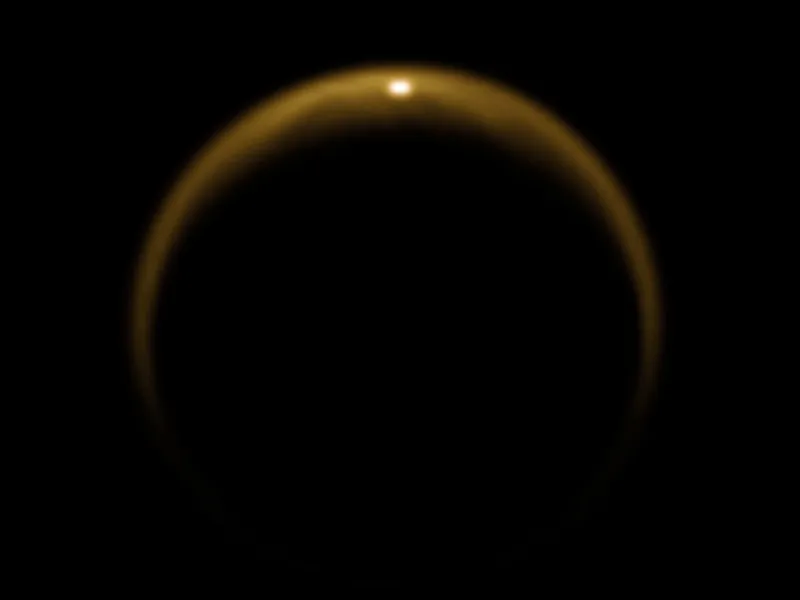
Vesicles in methane
Scientists considered Titan’s atmosphere and chemistry and calculated how vesicles might assemble in its environment.
Of course, these hypothetical vesicles would need to form in liquid methane or ethane.
On Titan, sea spray droplets caused by raindrop impacts could be coated in amphiphiles.
When the droplets land back on the hydrocarbon lakes, they might form double-layered membranes, wrapping the droplets into cell-like spheres.
These vesicles wouldn’t be living beings themselves, but they could be protocells: primitive containers that protect and concentrate molecules.
Such compartments are considered one of the crucial steps toward the emergence of life.
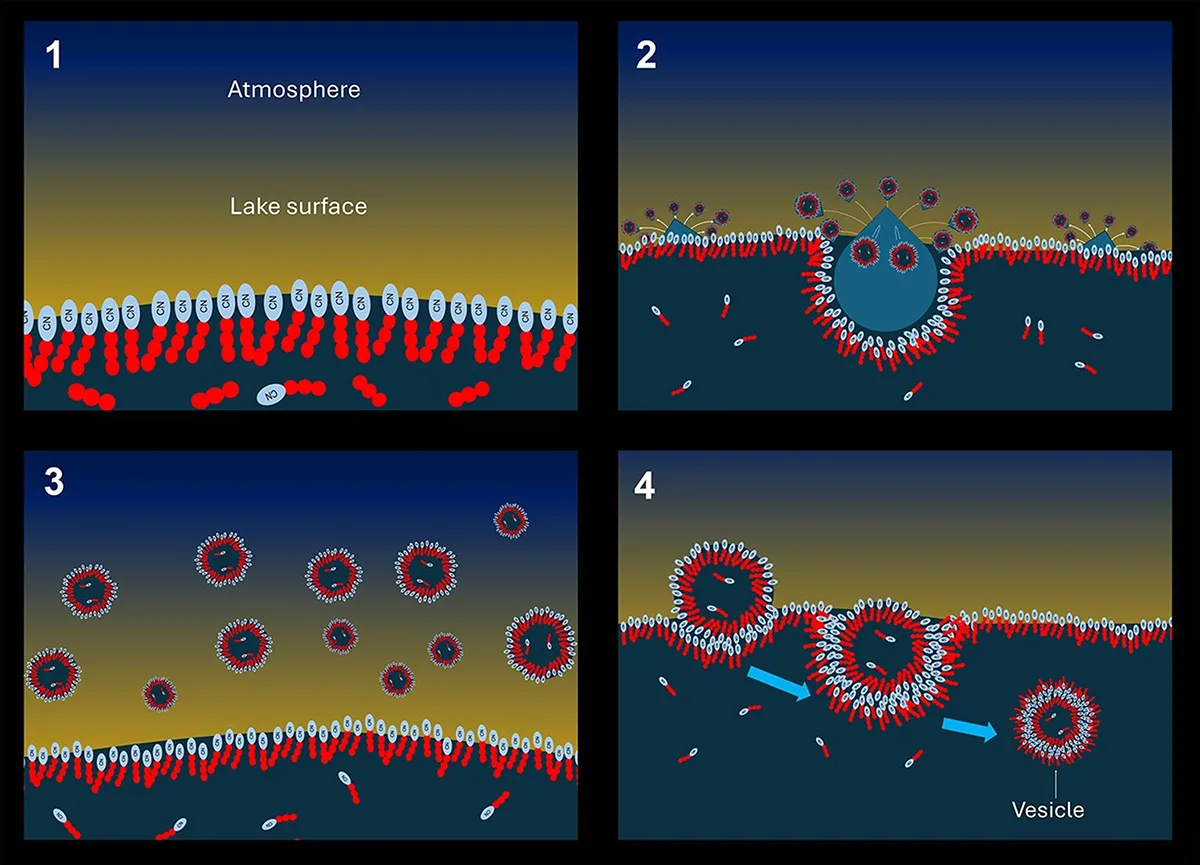
Titan’s wild weather is a chemistry lab
Thanks to data from NASA’s Cassini spacecraft, we know Titan has a dense atmosphere rich in nitrogen and methane.
Methane clouds form, rain falls, rivers carve through icy terrain and lakes fill, only to evaporate and start the cycle again.
Solar radiation breaks apart simple molecules in Titan’s atmosphere, allowing them to recombine into complex organics.
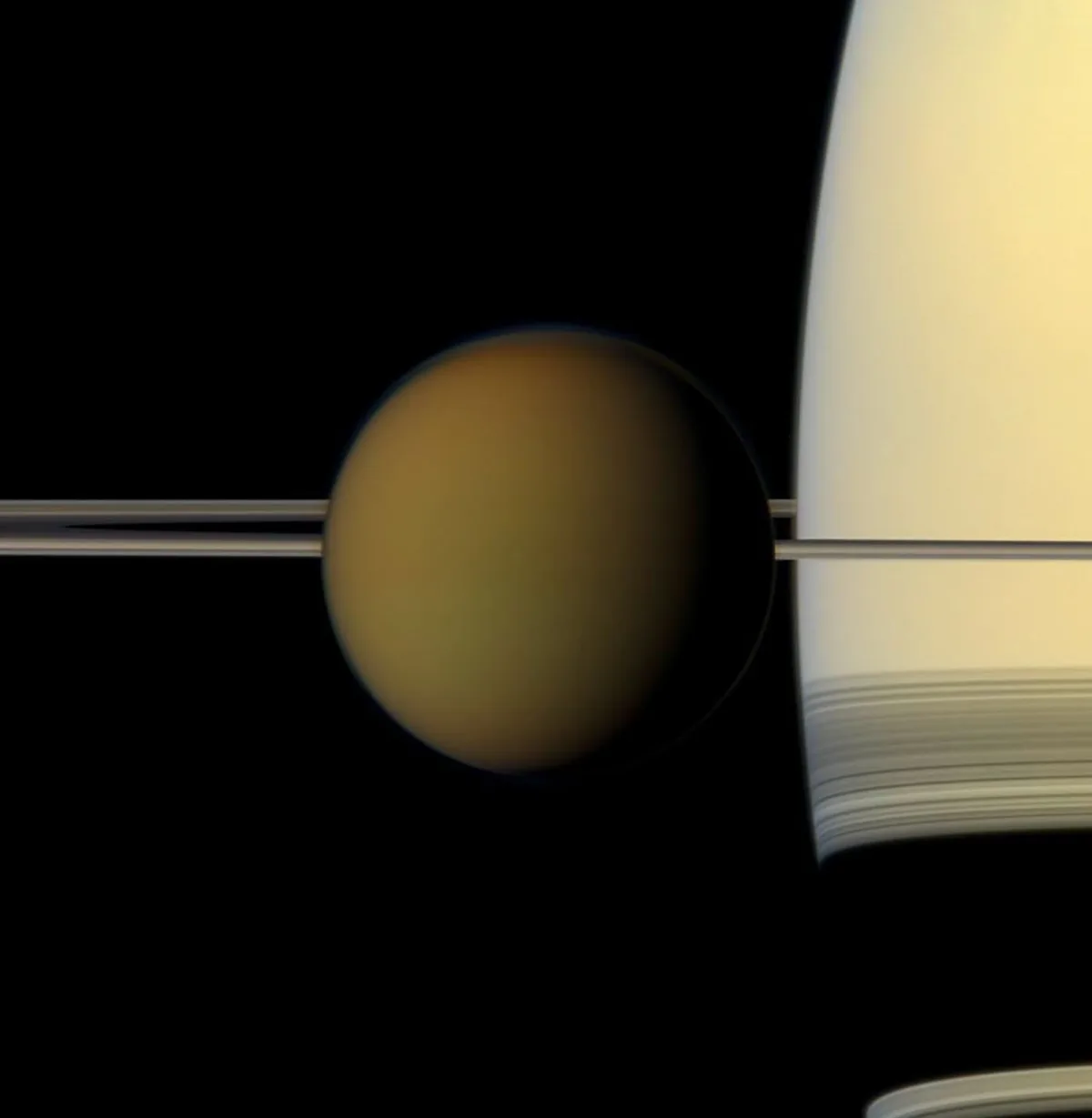
Some of these could eventually rain down into the lakes and mix with amphiphiles to form vesicles.
In other words, Titan may be replicating some of the steps Earth took toward life.
“The existence of any vesicles on Titan would demonstrate an increase in order and complexity, which are conditions necessary for the origin of life,” says Conor Nixon of NASA’s Goddard Space Flight Center in Greenbelt, Maryland.
“We’re excited about these new ideas because they can open up new directions in Titan research and may change how we search for life on Titan in the future.”
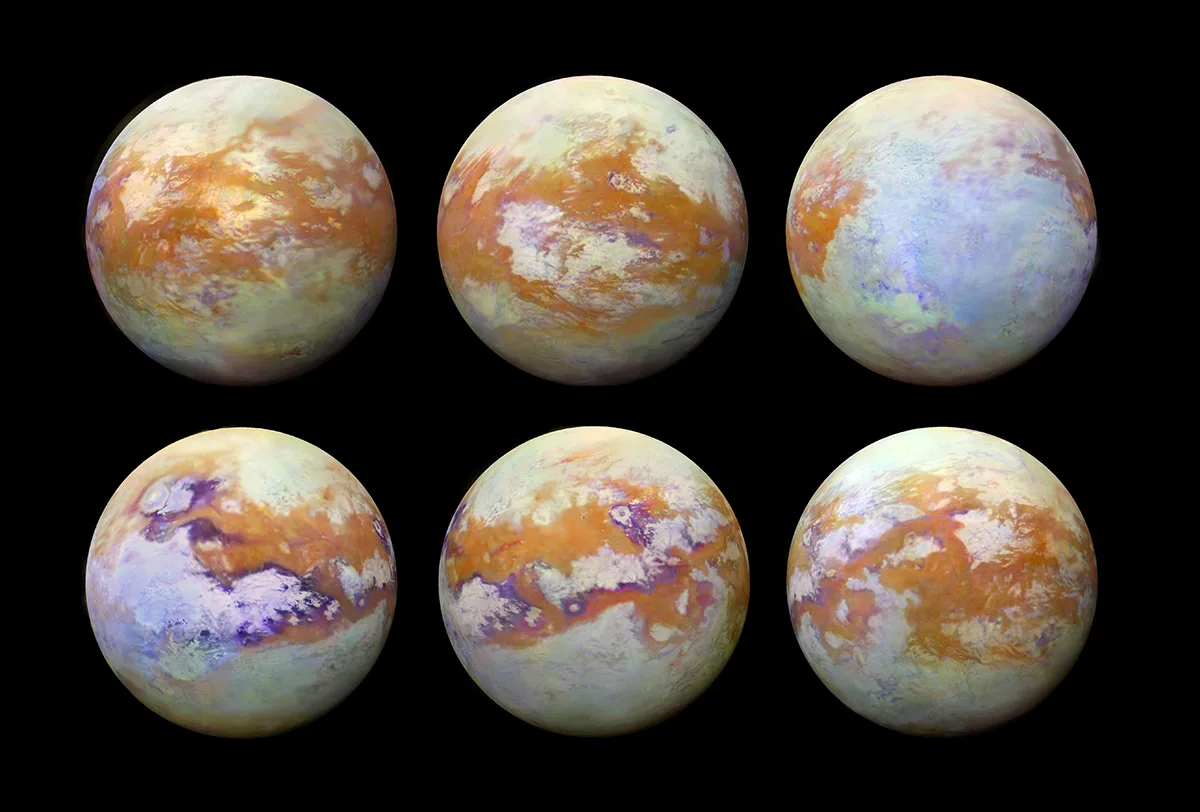
Could Dragonfly solve the mystery?
NASA’s next leap towards unlocking the secrets of Titan is its Dragonfly mission, a drone-like rotorcraft set to launch later this decade.
Dragonfly won’t visit Titan’s lakes directly or carry tools to spot vesicles, but it will hop across the surface, analysing the chemistry of dunes, craters and icy plains.
By studying Titan’s surface and atmosphere up close, Dragonfly could help determine whether the building blocks for life are assembling on this distant moon.
Read the full paper here
